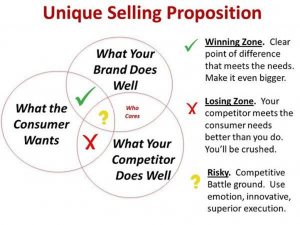Let’s face it! If you are running an early stage startup, storytelling is pretty low down the pecking order of needs. Growth and customer acquisition are the most important driving forces and continues to be the priority in the initial years.
One thing that happens in the meanwhile is that the unique idea remains no longer distinctive. Assuming that, there is a market for the needs your company was built to service, you begin to notice emerging competition who is replicating your proposition and offering similar services. As competition begins to heat up, the battle is one of narratives with several companies saying pretty much the same thing!
This is the stage in a startup’s journey that poses a big challenge… a time when your idea is no longer unique! As a founder you are then faced with the dilemma of whether to invest precious seed money into brand building and customer loyalty programs or to continue to spend the resources to improve and expand the product offering. The former option often means allocating a marketing budget that can range from digital solutions to traditional ways of generating visibility and saliency.
At the risk of being slightly controversial, I would like to profess a ‘Do-It-Yourself’ approach… something you can control, lace it with tons of passion and of course end up spending much less! The solution lies in simply refurbishing and telling your story better and “owning the space” that you operate in. At its simplest, it means a sharp relook at your website and sales deck to ensure your story is told most powerfully through these tools. And then, if you have other digital assets such as your blog or social media pages, use them to creatively express your message. Expensive brand building initiatives can wait till you are ready…
Three steps of DIY storytelling for startups
Start by sharpening the positioning statement: You did this before… this was the cornerstone of founding the company and its bizarre going back to relook at it. But it’s worth reviewing it if you know that the uniqueness of the idea has lost its sheen. The big question at this stage is, what makes you better and more attractive to the customer than the competition. Articulating this in a simple, pithy and easy to remember sentence is perhaps the hardest part of the journey. The answer lies in a deep dive…

- Home into every aspect of your business… technology, service, people, clients and success stories to identify that one thing that stands tall in the market that only you can claim.
- Once you have it, make it your first line in the pitch deck, the bold message on your company’s webpage and virtually the opening line of every business conversation that you and your team engage in hitherto.
- Ensure it is simple and devoid of jargon. Some examples…
-
- AirBnB: Book unique homes and experience a city like a local
- Canva: Amazingly simple graphic design software
- Influitive: Helping companies discover, nurture and mobilise their advocates
Get your customers to show your worth – not just tell!
- If your customer storytelling is just limited to a few quotes from happy customers with profile pictures, I feel, it is one big lost opportunity! Agree that testimonials are the easiest to get, case studies are a bit more difficult to create, while getting the customer to tell a story for you is the toughest!
- Go for short videos where your customers speak about you and are willing to showcase how you have solved one of their biggest problems. It might need a bit of cajoling and of course time from your end. Trust me, it is worth all the effort. It builds credibility among and trust among those who view it, apart from high engagement on your social assets. Even if you have a few such video case studies, it is gold dust! The rest can be the traditional testimonials..
The proof of the pudding – demonstrate why you are the best
- This should be easier than the point above. The only investment is commitment and time within your organisation to do a bit of storytelling about how you manage your processes/technology/people better, that makes your solutions/product the best in class.
- Identify each stream that ideally addresses the questions that have been asked during your business acquisition process. By doing so, you are talking to each stakeholder/customer segment or individual.
- Capture the stories of how you do things. Make it simple, conversational and jargon free. Again, video is the most powerful way. A good phone camera is all you need, provided you have a script and a storyline to pursue.
As and when the market begins to get increasingly undifferentiated, the key lies in recalibrating and strengthening your narrative. This is perhaps the most rudimentary step to brand building, something that early stage startups can learn from those who are giants today, but were startups not very long ago…
The views and opinions published here belong to the author and do not necessarily reflect the views and opinions of the publisher.



Be the first to comment on "Keys to successful storytelling for startups"